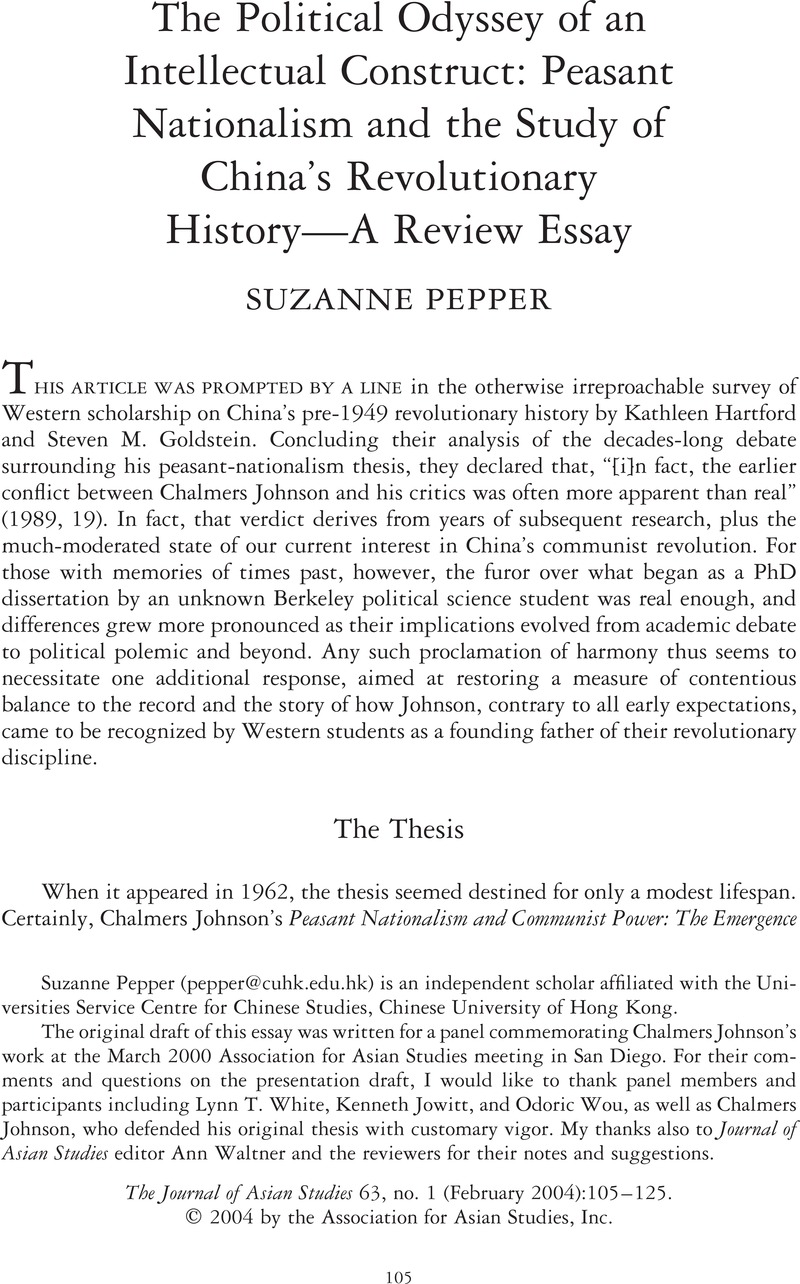Crossref Citations
This article has been cited by the following publications. This list is generated based on data provided by Crossref.
Cong, Xiaoping
2007.
Planting the Seeds for the Rural Revolution: Local Teachers' Schools and the Reemergence of Chinese Communism in the 1930s.
Twentieth-Century China,
Vol. 32,
Issue. 2,
p.
135.
Mitter, Rana
2008.
WRITING WAR: AUTOBIOGRAPHY, MODERNITY AND WARTIME NARRATIVE IN NATIONALIST CHINA, 1937–1946.
Transactions of the Royal Historical Society,
Vol. 18,
Issue. ,
p.
187.
MITTER, RANA
and
MOORE, AARON WILLIAM
2011.
China in World War II, 1937–1945: Experience, Memory, and Legacy.
Modern Asian Studies,
Vol. 45,
Issue. 2,
p.
225.
Goodman, David S. G.
2011.
Chalmers Johnson andPeasant Nationalism: the Chinese revolution, social science, and base area studies.
The Pacific Review,
Vol. 24,
Issue. 1,
p.
3.
Taylor, Jeremy E.
and
Huang, Grace C.
2012.
“DEEP CHANGES IN INTERPRETIVE CURRENTS”? CHIANG KAI-SHEK STUDIES IN THE POST-COLD WAR ERA.
International Journal of Asian Studies,
Vol. 9,
Issue. 1,
p.
99.
Blecher, Marc
2013.
The Wiley-Blackwell Encyclopedia of Social and Political Movements.
Chen, Janet Y.
2017.
A Companion to Chinese History.
p.
168.
Chen, Ting
and
Kung, James Kai-Sing
2020.
The Rise of Communism in China.
SSRN Electronic Journal ,
Blecher, Marc
2022.
The Wiley-Blackwell Encyclopedia of Social and Political Movements.
p.
1.





